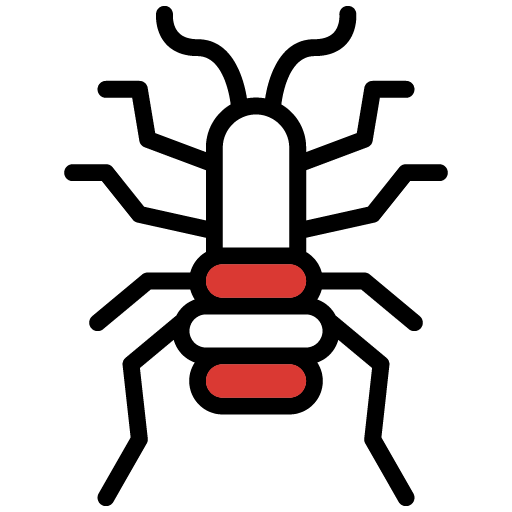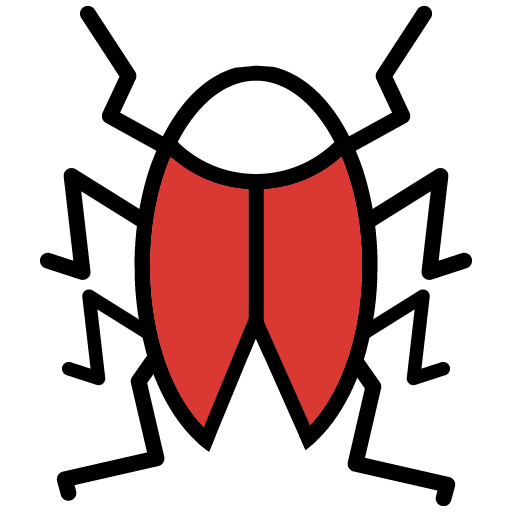DEFEND YOUR HOME (AND FURRY FRIENDS) FROM FLEAS

How Can You Tell if You Have Fleas?
Signs of a flea infestation tend to be fairly obvious - even if you are dealing with an infestation for the first time. Abnormal scratching, licking and/or biting from animals is always the first tell-tale sign you have a problem. Fleas seek out blood as a food source on any type of animal or human. This leads to hypersensitivity and can cause rashes or lesions anywhere on the body. Pets licking, biting, and/or scratching at these rashes usually indicates the presence of these annoying parasites.

Another common pet reaction to fleas is hair loss or alopecia. Continually scratching at flea bites can cause animals to pull out their fur. You might also notice your pet has pale gums. In serious flea infestations, your pet may not produce enough red blood cells compared to what's being eaten by the fleas. This causes anemia in your pets.
Flea “dirt” is another sign to look for around your house or on your pet. Small black or reddish-brown specks composed of flea feces and digested blood will start to become noticeable especially on white backgrounds. You can rub a wet paper towel on your pet to check for flea dirt.
Are Fleas Bad For Humans & Pets?
Fleas cause a variety of issues for pets. The most common of which is flea bite dermatitis. This is a direct allergy to flea saliva. Leading to intense itching and scratching for your pet. Obsessive itching breaks open the skin and forms a scab anywhere on the body that can get infected.

Other major problems include....
Tapeworm is another major problem caused by fleas. By accidentally ingesting a flea, these parasites are passed from one host to another. Once in the next hosts body, they can grow up to 12 inching long and can cause itchy rear end and weight loss.
GET RID OF FLEAS
There are various treatments for getting rid of fleas in your home from topical, oral, spot treatments, shampoos, sprays dusts or dips. Traps, plug-ins, powders, and flea bombs are in home remedies that a homeowner can use themselves to try and combat an infestation of fleas. In most cases it can take up to four months to get rid of them on your own, and most fleas are becoming immune to such practices.
Home-remedies are exhausting and continual due to the various lifestages of fleas.
Professional help can save you hours and hours of effort. We can establish a treatment routine to attack the fleas at their various lifestages, preventing the reocccurances that come with DIY regimens.
At ANY sign of a possible infestation, call Victoria's Pest Control right away. (908) 572-0911
Can You Prevent Fleas?
Flea prevention in and around your home is a task a pet owner might want to take on to lower the risk of an infestation. Trimming grass and trees in your yard will leave less space for fleas to hide. But by doing this, you are making your yard a more inviting space for wild animals to crawl and bring fleas with them. Keeping your pet’s food and water bowls inside will help deterrent these animals from staying too long in your yard. Spraying your yard will help keep it extra safe if animals do decide to stick around. By spraying, you will have the most kid-friendly and pet-friendly yard.
Vacuum your home on a regular basis and change your vacuum bags frequently. Provide your pets seasonal flea prevention medications, and bathe them with flea shampoo. Some carpet sprays are made to combat fleas and are another useful tool for prevention. The best ones destroy fleas in all stages: eggs, larvae, and adult.
DEFEND YOUR HOME (AND FURRY FRIENDS) FROM TICKS

How Can You Tell if You Have a Tick Problem?
A tick in your house is unsettling let along a full infestation. While ticks do not fly or jump, they can latch onto fur, clothing or skin. They often hitchhike via pets or rodents. The only exception to this is the brown dog tick. This species survives and reproduce quite well inside, as well assoft ticks that sometimes invade structures searching for a host.

How Dangerous Are Ticks for Humans & Pets?
Ticks are accountable for some of the scariest diseases that are transmitted from a parasite.

Anaplasmosis will often present itself with fever, headache, chills, and muscle aches. Babesiosis infects the red blood cells in your body. Many people who are infected do not have any symptoms of this disease, but signs in dogs are usually typically severe, including pale gums, depression, dark colored urine, fever, and swollen lymph nodes. In the most severe cases the dog may suddenly collapse and go into shock. With a range of symptoms from rashes to regression in children, Borrelia or Lyme’s disease is the most common tick transmitted disease. It can present itself in humans and animals. Ehrlichiosis early symptoms include fever, chills, server headache, muscle aches, nauseas vomiting, diarrhea, loss of appetite, confusion, and rash. Late illness includes brain or nervous system damage, respiratory failure, uncontrolled bleeding, organ failure or even death. In animals’ symptoms include depression, reduced appetite, fever, stiff and painful joints, and bruising.
There are even tick-borne diseases that attack only animals.

Tularmeia affects cats more than it affects dogs. Cat symptoms include high fever, swollen lymph nodes, nasal discharge, and possibly abscess at the site of the tick bite. Dogs will experience reduced appetite, depression and mild fever. Tick paralysis is cause by a toxin. The toxin affects the nervous system and dogs become weak and limp while cats do not appear to have much trouble with the condition. Weakness in rear legs, eventually involving all four limbs, followed by difficulty breathing swallowing. Death may be a result of this disease in dogs. Canine anaplasmosis is carried by deer ticks, western black-legged ticks, and in the brown dog tick. Both cats and dogs are at risk of this condition. Signs of anaplasmosis are like ehrlichiosis. Pets will show signs of diseases within a couple weeks after infection. Most symptoms of any tick-borne disease can be treated if taken seriously. At the first signs of symptoms consult a physician or vet.
Can You Prevent Tick Problems?
Wearing protective clothing outdoors, such as pants that can be tucked into socks, can prevent ticks from crawling towards one of their favorite areas. (They favor moisture and gravitate towards sweaty feet and other sweaty places.) Wearing light-colored clothing makes it easier to inspect for these creepy crawlers.
If you have been in the woods, or around tall grasses especially, you should check yourself with help from a family member before or directly after coming inside. If you do find yourself with a tick on you, remain calm. Bug repellents such as DEET, permethrin or picaridin can also help keep these critters off you. The use of topical treatments, oral medications, sprays, powders, shampoos, dips and collars can be helpful when preventing ticks from attaching themselves to your animals. Keeping your grass cut low and avoiding wooded areas can also be helpful, however having your lawn treated by Victoria's Pest Control is far more efficient, especially if you live near areas prone to ticks.
At ANY sign of a possible infestation, call Victoria's Pest Control right away. (908) 572-0911
GET RID OF TICKS
Tick infestations should be handled by a professional. Our highly trained technicians can not only solve your tick problem, but provide you with ongoing preventative solutions to protect your family and pets.
